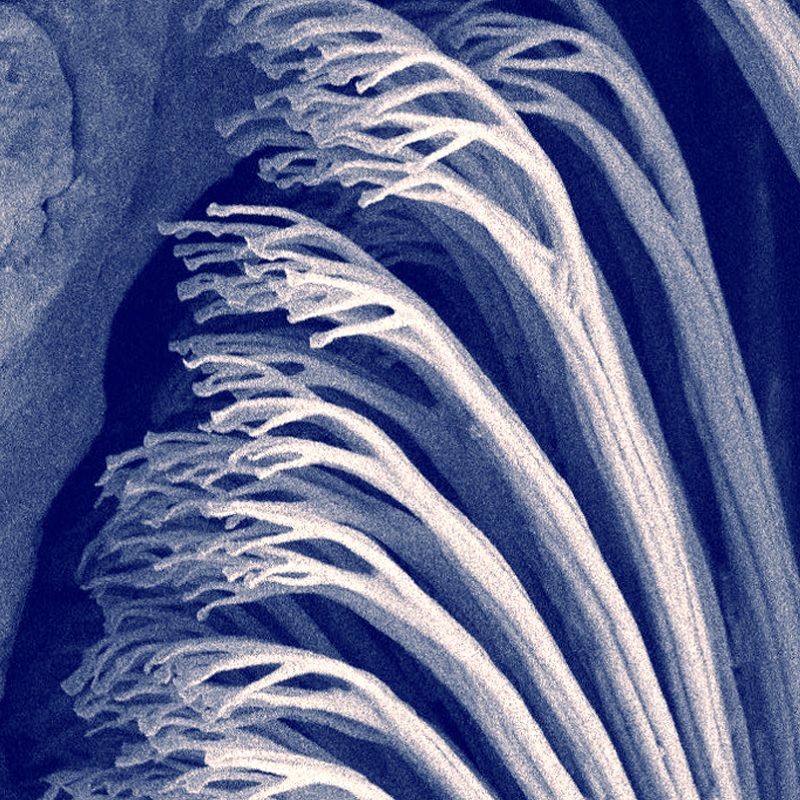A new two-part Interface Focus issue explores the potential of biological composite materials.

We spoke to the organisers of our latest Interface Focus issue, Professor Stanislav Gorb and Dr Wencke Krings. They explore how biological composites have the potential to be used in biomimetic applications, including biomedicine and the environment. This issue is in two parts: Part I explores chitin-based biological composites and Part II focuses on biological and bioinspired composites.
1) Please can you briefly introduce the issue and tell us what it's about?Nature has inspired scientists and engineers to develop stronger, lighter, and more resilient materials by studying biological composites perfected through evolution. These composites, found throughout the six kingdoms of life, combine different materials at various scales to exhibit superior properties. Examples include teeth, bones, chitinous or keratinous structures showcasing nature's ingenuity. Biological composites feature hierarchical structures from nanoscale molecular patterns to macroscopic tissues, optimised for specific functions. Studying these materials provides insights for creating biomimetic applications. This special issue, which is separated into two parts, explores these innovations and their applications bringing together experts from the field whose work is presented in 21 studies.
2) The issue is split into Parts I and II. How does the research covered in each part relate to the other one?
In the first part, the focus is on chitin-based, composite materials, which includes insect and crustacean cuticle structures and mollusc mouthparts. The second part showcases studies on composite materials of vertebrate bones and teeth, collagen, keratin, spider silk, fish scales and bioinspired polymers.
3) How was your experience organising an Interface Focus issue?
Organising an Interface Focus issue was a highly rewarding experience. It provided an excellent opportunity to collaborate with leading experts in the field, enriching our understanding and broadening our professional network. The process was both challenging and fulfilling, requiring meticulous planning and coordination. Handling diverse and innovative research articles was particularly gratifying, as it allowed us to highlight cutting-edge advancements and foster interdisciplinary dialogue. The support from the editorial team was invaluable, ensuring a smooth and efficient workflow. Overall, this experience not only enhanced our editorial skills but also reinforced our passion for advancing scientific knowledge. We look forward to future opportunities to contribute to such influential and impactful publications.
4) What are the some of the outstanding research questions that should be addressed in this field?
In the field of biological composites, several outstanding research questions remain to be addressed:
- Mechanistic understanding: How do the molecular and structural interactions within biological composites contribute to their exceptional mechanical properties?
- Hierarchical structure: What are the specific hierarchical structural features that optimise performance, and how can these be replicated in synthetic materials?
- Self-assembly processes: How do biological systems orchestrate the self-assembly of complex composites, and can these processes be mimicked in the lab?
- Adaptability and functionality: How do biological composites adapt to changing environmental conditions and stresses, and can this adaptability be engineered into new materials?
- Biomineralization: What are the precise biological pathways and mechanisms involved in biomineralization, and how can they be harnessed for creating novel materials?
- Multifunctionality: How do biological composites achieve multifunctionality (e.g., combining strength, flexibility, and self-healing), and can these multifunctional properties be integrated into synthetic composites?
- Sustainability: How can the principles of biological composites be applied to develop sustainable and eco-friendly materials that reduce environmental impact?
- Biomedical applications: What are the potential biomedical applications of biomimetic materials inspired by biological composites, particularly in areas like tissue engineering and regenerative medicine?
- Durability and longevity: How do biological composites maintain their properties over long periods, and can this durability be replicated in engineered materials?
- Computational modelling: How can advanced computational techniques be applied to predict the behaviour of biological composites and guide the design of new materials?
- Interfacial interactions: What roles do interfacial interactions play in the overall performance of biological composites, and how can these be optimised in synthetic systems?
Addressing these questions will not only deepen our understanding of biological composites but also pave the way for the development of advanced materials with applications across various industries.
Image credit: A high resolution SEM image of the tip of single gecko hair, where the branches and spatulate tips are well seen. The hair itself is an excellent example of the biological composite material. See ‘Interaction of a non-axisymmetric artificial single spatula with rough surfaces’ by Qian Cheng, Zhizhen Jiang, Feodor M. Borodich, Stanislav N. Gorb, and Xiaoqing Jin in this issue. Image by Stanislav Gorb.
Keep up to date with the latest issues of Interface Focus by signing up for content alerts, and browse previous theme issues on the journal website.
